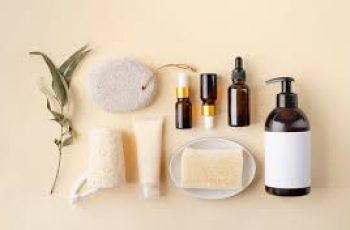
Gallic acid In Skin Care
What is gallic acid?
Gallic acid (GA) is a naturally occurring phenolic compound found in various plants, including gallnuts, sumac, witch hazel, tea leaves, oak bark, and other plants. Diglucosyl gallic acid (DGA) is a biotechnologically modified form of gallic acid designed to be activated by the skin’s microbiome. These compounds have been shown to be effective and safe in cosmetic formulations. They are often found in skin lightening or antiaging serums and creams. These gallic acid compounds are known for potent antioxidant properties, which help in protecting the skin from oxidative stress and free radical damage. Additionally, gallic acid has anti-inflammatory properties which is why it is used to decrease dark spots from acne or melasma and to soothe sensitive skin.
As a Thank you for reading our educational content, we’d like to offer you 20% off your next purchase! At checkout, use the code STSBlog20 for an instant discount!
Stability: DGA is more stable and effective topically than gallic acid
Microbiome Activation: Unlike gallic acid, DGA is activated by the skin’s microbiome, converting into a potent tyrosinase inhibitor that lightens dark spots.
Good for Sensitive Skin: Soothing and calming properties
Melasma: Can be used in both treatment and maintenance regimens
Gallic acid Skin Care Products
Many top selling skin care brands are beginning to add gallic acid or diglucosyl gallic acid because of its effectiveness and tolerability. Here are some of my recommendations for products with DGA:
Diglucosyl Gallic Acid vs Gallic Acid
Gallic acid is a naturally occurring phenolic compound found in various plants, known for its antioxidant, anti-inflammatory, and antimicrobial properties. It protects the skin from free radicals, reduces inflammation, and helps combat microbial infections. However, while it is stable, it is susceptible to environmental factors and can degrade more quickly, potentially reducing its efficacy over time.
In skin care products, the derivative diglucosyl gallic acid may be used instead. Diglucosyl Gallic Acid is a biotechnologically created molecule in which gallic acid is linked with glucose molecules. This enhances its stability, making it more suitable for use in antiaging and skin lightening serums and creams. Diglucosyl gallic acid can inhibit tyrosinase after activation by the skin microbiome. This targeted activation allows a gradual activation process, which minimizes potential irritation and enhances tolerance. This is why this is a popular ingredient for skin lightening in sensitive skin types prone to reactivity.
What is Diglucosyl Gallic Acid?
Diglucosyl Gallic Acid (DGA) is the INCI name of a biotechnologically created molecule known for its skin-brightening, anti-inflammatory, and photoprotective properties. It is also referred to by the it’s other name Trihydroxy Benzoic Acid Alpha-Glucoside. This novel ingredient is activated by the skin’s microbiome, making it a unique addition to cosmetic formulations targeting hyperpigmentation and inflammation.
Benefits
This is an ingredient that is gaining popularity because of it’s benefits. The benefits of DGA for skin include:
Skin Brightening: Reduces the appearance of dark spots and promotes an even skin tone.
Anti-inflammatory: Decreases skin inflammation, which can reduce redness and swelling.
Photoprotection: Protects against UV rays by reducing UV-induced spot formation over time.
Antioxidant: Reduces free radical generation, protecting the skin from oxidative stress.
Anti-melanogenesis: Inhibits the production of melanin, preventing the formation of new dark spots.
Used To Treat
These soothing anti-inflammatory ingredients can be used to treat hyperpigmentation in sensitive skin types that may not be able to tolerate more irritating ingredients like hydroquinone.
Hyperpigmentation
Once applied to the skin, Diglucosyl Gallic Acid is partially converted by the skin microbiome into Trihydroxy Benzoic Acid. This conversion process results in two molecules that work synergistically:
Diglucosyl Gallic Acid: This molecule inhibits tyrosinase production, prevents melanin transfer to the upper skin layers, and controls skin inflammation.
Trihydroxy Benzoic Acid: A natural tyrosinase enzyme inhibitor that further reduces melanin synthesis.
Together, these molecules help control skin pigmentation by reducing melanin content, decreasing free radical generation, and modulating skin color to improve brightness and reduce redness, yellowness, and brownness.
Melasma
This is a good ingredient to use in your Melasma Maintenance Routine because it helps prevent inflammation and is only a mild tyrosinase inhibitor so it can be used in a tyrosinase inhibitor holiday.
Acne
This is a good ingredient in acne products if you have a skin type that develops dark spots from acne. This ingredient is noncomedogenic, sooths the redness of pimples, and helps lighten acne dark spots.
Safety
Both gallic acid and diglucosyl gallic acid are safe ingredients. They are rated a 1 by the EWG which is it’s safest rating. They can be used topically while breastfeeding and during pregnancy. This is why this ingredient is a popular melasma treatment to use during pregnancy.


